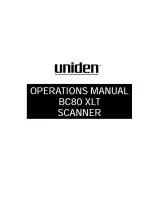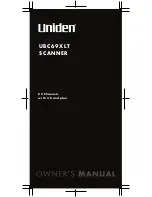
51
Trunking Operation
Important: To listen to the transmission, the mode of the
programmed channel must be the same as that of the
trunking channel (MOT, or ED).
When an ID code is received, the ID list for the bank is
searched, and if found, the text name stored for the ID
appears. If not found, scanning resumes immediately
unless the bank is in open trunking mode.
Note: There might be more than one talk group transmit-
ting at a time in some Motorola trunking systems. If you
set the scanner to manually tune in Motorola trunking
mode, you will hear the talk group on that channel, but
the display will alternate between all active IDs.
Trunking group frequencies are included in the supplied
Trunking Guide
. Frequency fleet map and talk group in-
formation is also widely available on the Internet, (for ex-
ample, at
www.trunkscanner.com
).
UNDERSTANDING TRUNKING
In the past, groups that transmit frequently, such as po-
lice departments, could transmit on only a few frequen-
cies. This resulted in heavy traffic and often required 2-
way radio users to wait for a specific frequency to clear
before transmitting. Trunked systems allow more groups
of 2-way radio users to use fewer frequencies. Instead of
selecting a specific frequency to transmit on, a trunked
system chooses one of several frequencies when the 2-
way radio user transmits. The system automatically
transmits the call on that frequency, and also sends a
code that identifies that 2-way radio user's transmission
on a control channel.
Your scanner lets you easily hear both the call and re-
sponse transmissions for that 2-way radio user and
therefore follow the conversation. For EDACS and Mo-
torola (above 406 MHz range), the scanner monitors the
control channel between each transmission to identify
talk groups.















































